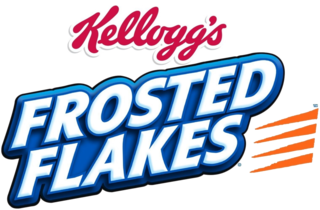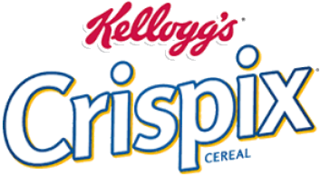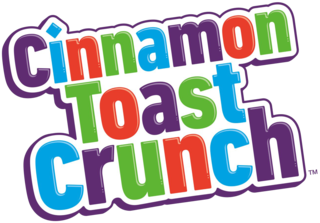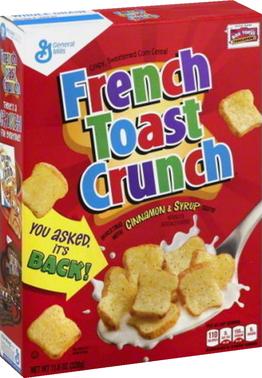
Grits are a type of porridge made from coarsely ground dried maize or hominy, the latter being maize that has been treated with an alkali in a process called nixtamalization, with the pericarp removed. Grits are cooked in warm salted water or milk. They are often served with flavorings as a breakfast dish. Grits can be savory or sweet, with savory seasonings being more common. Grits are similar to other thick maize-based porridges from around the world, such as polenta and mieliepap. The dish originated in the Southern United States but is now available nationwide. Grits are often part of the dinner entrée shrimp and grits, served primarily in the Southern United States.

Porridge is a food made by heating or boiling ground, crushed or chopped starchy plants, typically grain, in milk or water. It is often cooked or served with added flavourings such as sugar, honey, fruit, or syrup to make a sweet cereal, or it can be mixed with spices, meat, or vegetables to make a savoury dish. It is usually served hot in a bowl, depending on its consistency. Oat porridge, or oatmeal, is one of the most common types of porridge. Gruel is a thinner version of porridge and congee is a savoury variation of porridge of Asian origin.

Breakfast cereal is a category of food, including food products, made from processed cereal grains that are eaten as part of breakfast, or as a snack food, primarily in Western societies.

General Mills, Inc. is an American multinational manufacturer and marketer of branded ultra-processed consumer foods sold through retail stores. Founded on the banks of the Mississippi River at Saint Anthony Falls in Minneapolis, the company originally gained fame for being a large flour miller. It is headquartered in Golden Valley, Minnesota, a suburb of Minneapolis.

Corn flakes, or cornflakes, are a breakfast cereal made from toasting flakes of corn (maize). Originally invented as a breakfast food to counter indigestion, it has become a popular food item in the American diet and in the United Kingdom where over 6 million households consume them.
Field corn, also known as cow corn, is a North American term for maize grown for livestock fodder, ethanol, cereal, and processed food products. The principal field corn varieties are dent corn, flint corn, flour corn which includes blue corn, and waxy corn.

Weet-Bix is a whole-grain wheat breakfast cereal created and manufactured in Australia and New Zealand by the Sanitarium Health Food Company, and in South Africa by Bokomo.

Frosted Flakes or Frosties is a breakfast cereal, produced by WK Kellogg Co for the United States, Canada, and Caribbean markets and by Kellanova for the rest of the world, and consisting of sugar-coated corn flakes. It was introduced in the United States, in 1952, as "Sugar Frosted Flakes". The word "sugar" was dropped from the name in 1983.

Kellanova, formerly known as the Kellogg Company and commonly known as Kellogg's, is an American multinational food manufacturing company headquartered in Chicago, Illinois, US. Kellanova produces and markets convenience foods and snack foods, including crackers and toaster pastries, cereal, and markets their products by several well-known brands including the Kellogg's brand itself, Rice Krispies Treats, Pringles, Eggo, and Cheez-It. Outside North America, Kellanova markets cereals such as Corn Flakes, Rice Krispies, Frosties and Coco Pops.

Crispix is a brand of breakfast cereal, introduced by Kellogg's in 1983. It was created specifically to compete with Ralston Purina's Chex family of cereals, which had about $125 million in annual sales and no significant competition. By 1987, Crispix had sales of about $65 million.

Will Keith Kellogg was an American industrialist in food manufacturing, who founded the Kellogg Company, which produces a wide variety of popular breakfast cereals. He was a member of the Seventh-day Adventist Church and practiced vegetarianism as a dietary principle taught by his church. He also founded the Kellogg Arabian Ranch, which breeds Arabian horses. Kellogg was a philanthropist and started the Kellogg Foundation in 1934 with a $66-million donation.

Cinnamon Toast Crunch (CTC), known as Croque-Cannelle in French Canada and Curiously Cinnamon in the UK, and as a variant called Cini Minis in other European and Latin American countries, is a brand of breakfast cereal produced by General Mills and Nestlé. First produced in 1984, the cereal aims to provide the taste of cinnamon toast in a crunch cereal format. The cereal consists of small squares or rectangles of wheat and rice covered with cinnamon and sugar. The cereal is puffed and when immersed in milk, it makes a "snap" noise, similar to Rice Krispies. In most European countries and North America, the product is sold in boxes, but in Poland, Slovakia and Russia the cereal is sold in bags. The product was originally marketed outside Europe with the mascot of a jolly baker named Wendell. Wendell was replaced as a mascot by the "Crazy Squares", sentient Cinnamon Toast Crunch squares that often eat each other in commercials.
Post Consumer Brands, LLC is an American consumer packaged goods food manufacturer headquartered in Lakeville, Minnesota.

French Toast Crunch is a breakfast cereal launched in the mid-1990s, flavored to taste like French toast, by the General Mills company. The cereal pieces originally looked like mini slices of French toast, but General Mills changed the cereal to a style similar in appearance to Cinnamon Toast Crunch; a thin, wavy square sprinkled with cinnamon and sugar flavoring. General Mills later reintroduced the original design.

Post Toasties was an early American breakfast cereal made by Post Foods. It was named for its originator, C. W. Post, and intended as the Post version of corn flakes.

MOM Brands Company was an American producer of breakfast cereals, headquartered in Northfield, Minnesota. It markets its products in at least 70% of the country's grocery stores, with estimated sales in 2012 of US$750 million. It operates four manufacturing plants, in Northfield, Minnesota; Tremonton, Utah; Asheboro, North Carolina; and St. Ansgar, Iowa. The company has distribution centers in Grove City, Ohio; Coppell, Texas; and Salt Lake City, Utah.

The Quaker Oats Company, known as Quaker, is an American food conglomerate based in Chicago, Illinois. As Quaker Mill Company, the company was founded in 1877 in Ravenna, Ohio. In 1881, Henry Crowell bought the company and launched a national advertising campaign for Quaker Oats.

Bagrrys India Limited is an Indian multinational FMCG food-manufacturing company which manufactures the high-fiber breakfast cereals and health foods, headquartered in New Delhi, India. The company has two food brands in its portfolio ‘Bagrry's’ and ‘Lawrence Mills’.


















